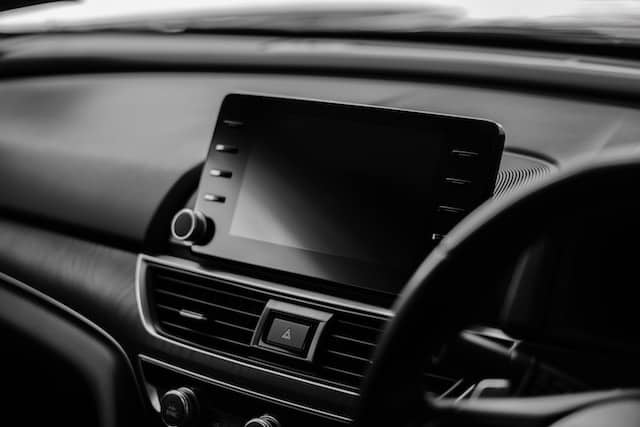Do Dashcams Have Batteries? Well, It Depends!
Do you ever wonder if dashcams have batteries?
Well, the answer is not a simple yes or no. Dashcams can come in two different types: those with built-in batteries and those that rely on the vehicle’s power source.
Understanding the differences between these types can help you choose the right dashcam for your needs.
Dashcams with built-in batteries are becoming increasingly popular due to their convenience and versatility. These dashcams have their own power source, which means they can continue recording even when your vehicle is turned off. This is especially useful if you want to capture any incidents that may occur while your car is parked.
Additionally, dashcams with built-in batteries often have features like motion detection or parking mode, which allows them to automatically start recording when they sense movement around your vehicle.
So whether you’re concerned about capturing evidence in case of an accident or just want some extra security for your parked car, a dashcam with a built-in battery could be a great choice.
On the other hand, there are also dashcams that rely on your vehicle’s power source. These dashcams are typically connected directly to your car’s electrical system and do not have their own internal battery.
While this means they won’t be able to record when your car is turned off, it also eliminates the need for periodic charging or worrying about battery life. These dashcams are always ready to go as long as your vehicle is running, making them ideal for drivers who frequently use their cars and don’t want to deal with the hassle of recharging their dashcam regularly.
Now that you know there are two types of dashcams when it comes to power sources – those with built-in batteries and those relying on vehicle power – you can make an informed decision about which one suits your needs best. Whether you prioritize convenience and versatility or prefer a more reliable connection to your vehicle’s power supply, there’s a perfect dashcam out there waiting for you.
So, keep reading to learn more about the benefits and limitations of each type, and discover how to choose the right dashcam that will provide you with peace of mind on the road.
Types of Dashcams with Built-in Batteries
You’ll be relieved to know that there are several types of dashcams with built-in batteries, ensuring uninterrupted recording even when your car is turned off. These dashcams are designed to provide a continuous power source and maintain functionality even without the car’s ignition on.
The built-in batteries act as a backup power supply, allowing the dashcam to continue recording for a certain period of time after the engine has been switched off.
One type of dashcam with a built-in battery is the capacitor-based dashcam. Unlike traditional lithium-ion battery-powered models, capacitor-based dashcams use supercapacitors as their power source. Supercapacitors have several advantages over regular batteries, such as longer lifespan and better performance in extreme temperatures. They can store energy quickly and release it just as fast when needed, making them ideal for capturing sudden events or accidents.
Read Also: Best Capacitor Dash Cam for 2023: Our Top Picks
Another type of dashcam with a built-in battery is the lithium-ion battery-powered model. These dashcams come equipped with rechargeable lithium-ion batteries that can provide extended recording time even without external power sources. They are typically designed to automatically switch from using external power to relying on their internal battery when the car’s ignition is turned off. This ensures that important footage isn’t missed during parking or in case of power interruptions.
Having a dashcam with a built-in battery gives you peace of mind knowing that your recordings won’t be interrupted, regardless of whether your car is running or parked. Whether you choose a capacitor-based or lithium-ion powered model, these innovative devices ensure continuous video capture and protection on the road. So next time you’re considering purchasing a dashcam, remember to look for one with an integrated battery for uninterrupted recording capabilities.
Dashcams that Rely on Vehicle Power Source
When relying on the vehicle’s power source, dashcams typically draw electricity from the car’s battery to function properly. These types of dashcams are designed to be constantly powered while driving and will automatically turn on and start recording when the engine starts. They are connected directly to the car’s electrical system, usually through the fuse box or by tapping into a power source in the vehicle.
Further reading: How Are Dash Cams Powered? Complete Guide
The advantage of dashcams that rely on the vehicle’s power source is that they don’t require any additional charging or maintenance. As long as your car’s battery is functioning properly, the dashcam will continue to operate without any interruptions. This means you don’t have to worry about remembering to charge it or replacing batteries regularly. Just make sure your car is regularly maintained and its battery is in good condition for uninterrupted operation of your dashcam.
Benefits of Dashcams with Built-in Batteries
One major advantage of dashcams with built-in batteries is that they offer portable and reliable video recording without the need for constant vehicle power. These dashcams are equipped with their own internal power source, usually a rechargeable battery. This means that you can easily remove the dashcam from your vehicle and use it in another car or even carry it around for other purposes.
Having a built-in battery also ensures that your dashcam continues to record even when your vehicle’s engine is turned off. This is particularly useful in situations where you want to monitor your parked car or capture any incidents that may occur while you’re away. Whether it’s a hit-and-run accident or vandalism, having a dashcam with a built-in battery allows you to have evidence of what happened, providing you with peace of mind and potentially helping with insurance claims.
Additionally, these dashcams often come with features such as motion detection and parking mode, which rely on the built-in battery to function effectively. With motion detection, the camera automatically starts recording whenever it detects movement in its field of view. Parking mode allows the dashcam to continue monitoring your vehicle even when it’s parked, ensuring that any incidents or accidents are captured.
Choosing a dashcam with a built-in battery offers several benefits over those that rely solely on vehicle power sources. The portability and reliable video recording capabilities make them versatile tools for capturing important moments on the road or protecting your vehicle when parked. With their advanced features and convenient power source, these dashcams provide an excellent solution for those who desire both functionality and peace of mind while driving or leaving their car unattended.
Limitations of Dashcams without Batteries
Imagine driving down the road, capturing every moment on your dashcam, only to realize that you missed out on crucial footage because your dashcam didn’t have a built-in battery. This is one of the limitations of dashcams without batteries.
While these types of dashcams are convenient for their plug-and-play nature, they heavily rely on being constantly connected to a power source in order to function. The lack of a built-in battery means that if your car loses power or if someone accidentally unplugs the dashcam, it will immediately stop recording. This can be frustrating, especially if you encounter an incident or accident while driving.
Additionally, without a battery, these dashcams cannot continue recording when the car is turned off or parked. So if you’re hoping to capture any potential vandalism or hit-and-runs while your car is unattended, a dashcam without a battery won’t be able to provide that continuous surveillance.
It’s important to consider these limitations before purchasing a dashcam without a built-in battery and make sure it aligns with your specific needs and expectations for recording footage on the road.
Choosing the Right Dashcam for Your Needs
Selecting the appropriate dashcam to suit your requirements necessitates careful consideration and evaluation of various factors.
When choosing a dashcam, think about the type of features you need. Do you want a basic model that simply records video footage, or do you prefer one with additional functionalities such as GPS tracking, built-in Wi-Fi, or advanced driver assistance systems? Consider your budget as well, as dashcams can range in price depending on their capabilities.
Another important factor to consider is the video quality of the dashcam. Look for a camera that offers high-resolution recording so that you can capture clear and detailed footage in case of an incident. In addition, check if the dashcam has good low-light performance to ensure visibility during nighttime recordings. It’s also worth considering the field of view offered by the camera lens – a wider angle will give you better coverage of your surroundings.
Furthermore, evaluate the size and design of the dashcam. You’ll want it to be discreet and not obstruct your view while driving. Some models offer sleek designs that blend seamlessly into your car’s interior. Additionally, consider how easy it is to install and use the dashcam. Look for user-friendly interfaces and intuitive controls that make navigating through settings hassle-free.
By carefully evaluating these factors and selecting a dashcam that meets your specific needs, you can ensure that you have a reliable device to capture any incidents on the road effectively. Remember to read reviews from other users to gain insight into their experiences with different models, which can help inform your decision-making process even further.
This article can help you choose the right dashcam for your needs.
Conclusion
In conclusion, dashcams do have batteries, but not all of them. There are two types of dashcams when it comes to power source: those with built-in batteries and those that rely on the vehicle’s power source.
Dashcams with built-in batteries offer several benefits, such as continuous recording even when the car is turned off and protection against power interruptions. However, they also have limitations, including limited battery life and the need to regularly recharge.
When choosing a dashcam, it’s important to consider your specific needs and preferences. If you want continuous recording even when your car is parked or turned off, then a dashcam with a built-in battery would be the ideal choice for you. On the other hand, if you prefer a more reliable power source or longer recording duration without worrying about recharging, then opting for a dashcam that relies on your vehicle’s power source would be more suitable.
Overall, having a dashcam can provide numerous benefits in terms of safety and security while driving. Whether you choose a dashcam with a built-in battery or one that relies on your vehicle’s power source ultimately depends on your individual requirements and priorities. So take some time to research and compare different models before making your decision to ensure that you find the perfect dashcam for your needs.







